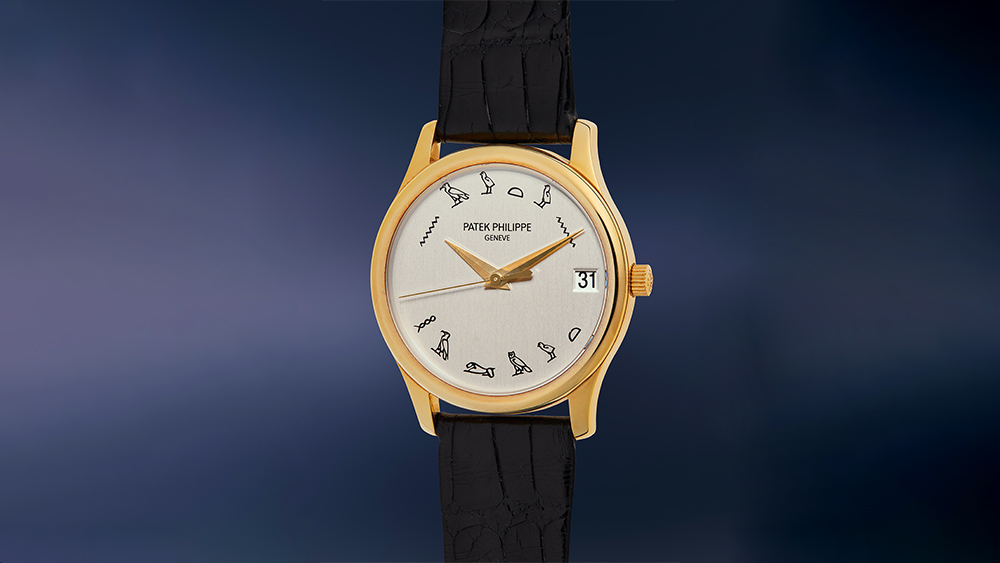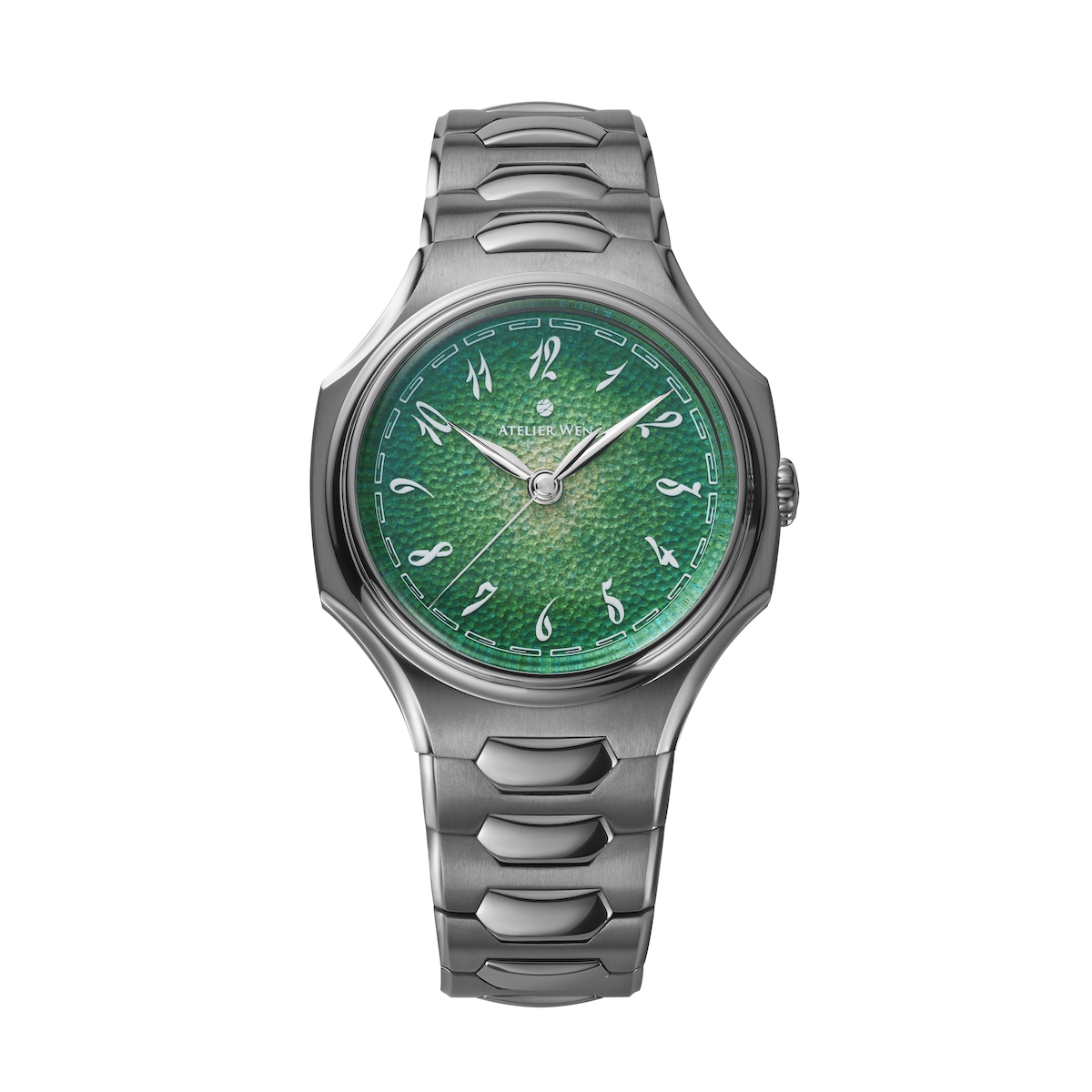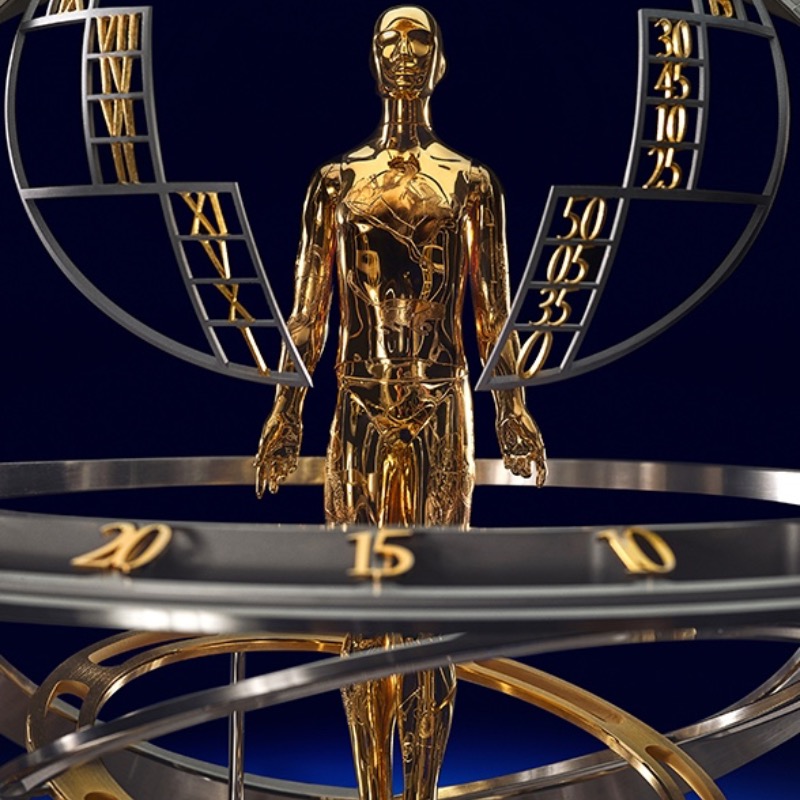A handful of ultra-rare timepieces are coming up for auction at Phillips in December—and your usual Rolex Daytonas and Patek Philippe Ref. 2499s aren’t the ones leading the 180 lots.
There is a trio of exceptional pieces up for grabs that should pique collectors’ interest. They include a fresh-to-market Cartier London Crash, a unique Grand Seiko “Kodo” and a Patek Philippe Ref. 3998J with dial markers executed in Egyptian hieroglyphics. All are coming up for sale at Phillips’ New York Watch Auction: Seven on December 10 and 11, which will mark the first time the company has held two auctions in one year in New York.
The Patek Philippe stands out as the most unusual of the bunch. The custom, unique piece from the collection of Saud Bin Muhammed Al Thani, a late prince of Qatar. A major watch collector, he was famously bought the Henry Graves super complication in 1999 for US$11,002,500—after his death in 2014, the watch was sold at Phillips for almost US$24 million. He was also the owner of the “Titanium Collection” sold by Sotheby’s, also in 2014—the lineup included a handful of Patek Philippes executed in titanium cases, one of which was part of a trio of timepieces, including two yellow gold versions, Al Thani commissioned that had hieroglyphs for hour markers.
“The one in titanium was pulled before the auction went live; no record of it exists online right now,” says Paul Boutros, head of watches in the Americas for Phillips. “But the two others the gold ones were bought and nobody understood what those characters might have meant. We’re announcing for the first time what they decipher and they spell out ‘Helmut Newton’, the photographer.” Al Thani was also a prominent collector of photography and the watch was intended as a gift to the photographer—although it was never bestowed. Interestingly, it’s not exactly a straightforward translation of the photographer’s name because, as Boutros points out, “there’s no like equivalent E’s and W’s in Egyptian hieroglyphs.” The actual translation is “Halmut Nautan.” The estimate is US$50,000 to US$100,000. And even though it is a simple Calatrava model, it has significant provenance and one hell of a story attached.

One that’s sure to be a blockbuster based on previous auction results is a fresh-to-market Cartier London Crash that is coming to the block from the family of the original owner, Daphne Farrago—a late jewelry collector, art collector and philanthropist. “Her taste and vision in collecting was so great that she has an entire collection of jewelry in the Museum of Fine Arts in Boston,” says Boutros. Her good eye led to the purchase of this 1970 Crash, an early model issued just a few years after the famous design’s debut. It is estimated at US$400,000 to US$800,000 but, given its pristine condition and the fact that Sotheby’s sold a 1970 Cartier London Crash for US$833,013 last November, surpassed in May 2022 by a 1967 Crash sold on Loupe This for over US$1.5 million, it is sure to go for well over its top estimate.

But if you’re in the market for something truly fresh-to-market, the unique Grand Seiko “Kodo” will be the goal. The Kodo, a constant-force tourbillon and the most complicated timepiece ever created by the Japanese watchmaker, debuted at Watches & Wonders to much fanfare in April, so if you didn’t place your order then for one of the 20 limited-edition pieces, chances are you will have to wait for a pre-owned one to come up at auction. This may be the only chance to still buy a “just out of the manufacture” Kodo and this singular reference SLGT001 differs from the original SLGT003 in that it is cased in Grand Seiko’s proprietary alloy, Brilliant Hard Titanium (said to be as light as pure titanium but twice as hard as stainless steel), features its exposed components executed in a striking silver color, a yellow gold accent on the power reserve and hand-engraved GS initials on the clasp of the unique brown strap in handpainted Urushi. To sweeten the offer, Grand Seiko is also offering a trip to Japan to meet its makers, as well as a trip to the company’s Shizukuishi studio in Japan’s Iwate prefecture.

The Kodo is part of 10 lots dedicated exclusively to Grand Seiko that will include both vintage and modern timepieces. Another special section of the auction will be dedicated to independents through TimeForArt, an organization that funds education in the world of contemporary art as well as emerging artists. “We have 17 watches in the sale that are part of TimeForArt, including some unique pieces by multiple independent brands,” says Boutros. “So, they are pretty exciting watches by art-focused artisans. I think are going to be well received by people.” Pieces like a unique C watch by Romain Gauthier with a dial decorated by famed artisan, Anita Porchet, a unique De Bethune x Marc Newson Blue Edition Hourglass or what Boutros describes as a “very special” yet-to-be-unveiled Urwerk will all be offered without reserve with proceeds going to benefit the Swiss Insitute.

And if that’s not enough to whet your appetite for some new watches, the early F.P. Journe Tourbillon Souverain in platinum with a salmon dial—one of just six by the revered master watchmaker—should have collectors chomping at the bit to throw in a bid. Estimated between US$300,000 to US$600,000 it, like some of the other highlights in this auction, also comes with a quirky design feature. “There’s a rare human error on the caseback engravings,” says Boutros. “All of the other cases we’ve seen are engraved “Inv. Fecit” but this one is missing the “v” and reads “In. Fecit.” It’s a subtle detail, but it makes this already ultra-rare early Journe unique.
But when pressed about which watch he would take home if money were no object and he could bid on the auction, Boutros opts for the Cartier Crash citing it as “the pinnacle of watch design for the 20th century.”









